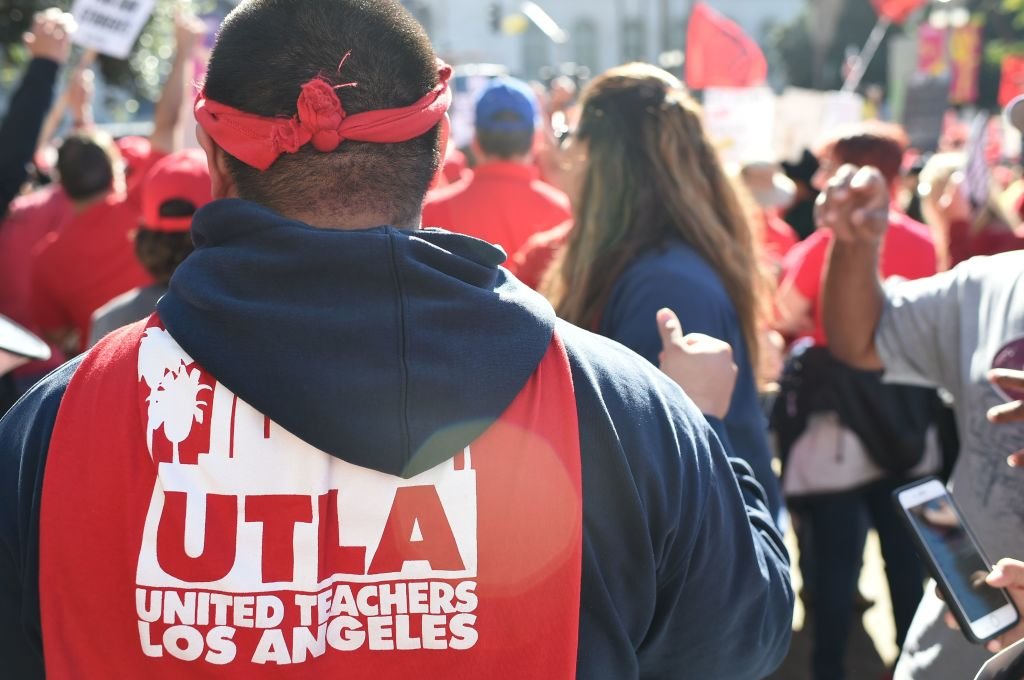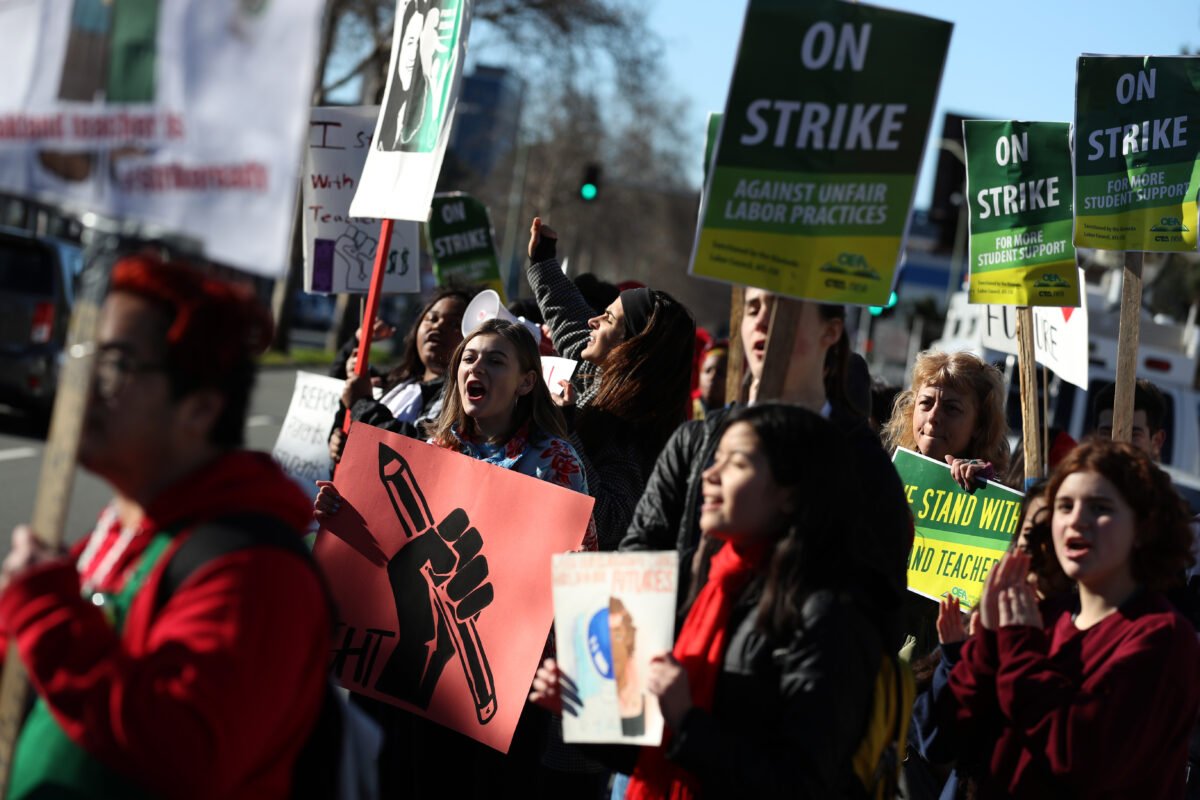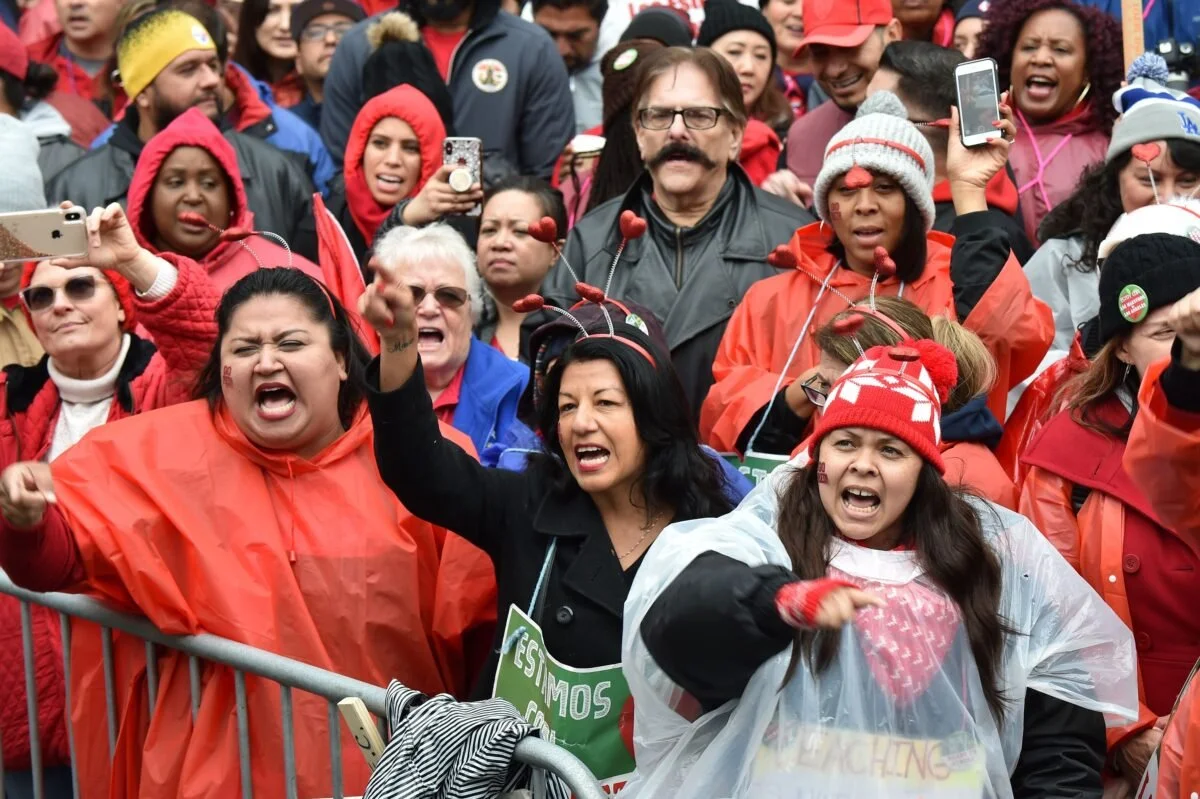Teachers Unions — End Them, Don’t Mend Them
After college, I taught fourth grade in my childhood public school district. I learned much from the kids and teachers and thoroughly enjoyed my time in the classroom. Teachers perform miracles every day, and their impact on generations of children can be profound. I understand why they’re so loved and respected.
However, teachers are often confused with their unions. In concept, teachers uniting together to negotiate on behalf of their colleagues over issues of salary, benefits, and conditions in the classroom makes sense. Yet there’s a dark and unpleasant underside to these unions often revealed at the time of a strike, which usually happens in some of California’s worst-run districts.
After all I’ve seen, I don’t believe teachers unions can be fixed. I’m now convinced that it’s immoral and unethical for principled and religious teachers to belong to the union.
Let me explain.
There are approximately 319,000 public school teachers in California. With less than 6 million children in the public school system, that equates to roughly 19 kids per teacher. What’s more impressive? The hundreds of millions of dollars in annual teachers union membership dues that are dedicated to lobbying efforts and political war chests.
Full-time teachers pay about $1,000 dollars per year in dues. Extrapolate those fees and California teachers unions at all levels—local, state, and federal—rake in between $200 million and $300 million per year for advocacy, lobbying, and political campaigns.
That’s a lot of cash that doesn’t go to academics.
Some argue that there isn’t enough money in our public schools. That’s a debate worth having. It could also be argued that too much money is spent on politics impacting the classroom.
Futurist Jerry Pournelle described our conundrum in what he dubbed The Iron Law of Bureaucracy: Those “devoted to the goals of the organization,” such as dedicated classroom teachers, are eventually overtaken by “those dedicated to the organization itself,” such as entrenched administrators in the education system or teachers union officials.
In this way, teachers unions have captured California’s public schools.
While many teachers go into the noble profession to enlighten young minds and mold them into engaged civic beings, the union undercuts the best teachers and protects the worst teachers. Add short tenure laws and a convoluted dismissal process to the mix and it’s nearly impossible to dismiss problematic teachers because of how vigorously the union defends them. And when budgets need to be cut, the state’s last-in, first-out policy sends new, bright, and innovative teachers to the curb regardless of how well they perform in the classroom.
Despite the U.S. Supreme Court freeing them from their obligation in the 2018 Janus case, many of them keep paying their dues. Why do decent teachers resent paying the thousand dollars per year in membership dues when they know it could be spent in other places and represents a significant amount of money over a 30-year career?
Fear of retaliation.
As any public school teacher can tell you, the place teachers dread the most isn’t the repugnant sex education classes they have to teach, playground duty, or parent-teacher conferences. Rather, they fear the teachers lounges. Most teachers are agreeable people and try to avoid sensationalism and conflict in the teachers’ lounge. Fewer still want anything to do with the organizing that regularly comes around the time that a contract is up for renewal and they’re going to be forced to strike against their own wishes. They know that strikes hurt the poorest and neediest kids the most.
And although collective bargaining for teachers is fairly standard, the agreements are complex, specific, and not for the benefit of the students. As education expert Terry Moe put it in his seminal book, “Special Interest: Teachers Unions and America’s Public Schools,” “Any realistic assessment of collective bargaining has to recognize that, at least for most districts most of the time, it is destined to produce many key decisions that depart from—and are systematically biased against—what is best for kids and effective organization.”
It’s true. Go to your district website and look up the most recent bargaining agreement and try to figure out how you and your child fit into that contract.
So if we want schools to succeed, let’s take a short hiatus from talking about teacher salaries, classroom sizes, and the latest teaching fads. Instead, let’s focus on deposing the teachers union leaders who highlight these issues but can never seem to improve the education of their students despite hundreds of millions of dollars flowing into their political coffers every year.
In fact, go one step further—let’s help our forlorn and intimidated teachers out of their union so they can stop paying an organization to work against their beliefs. It’s the moral thing to do.
This article was originally posted in the Epoch Times.



